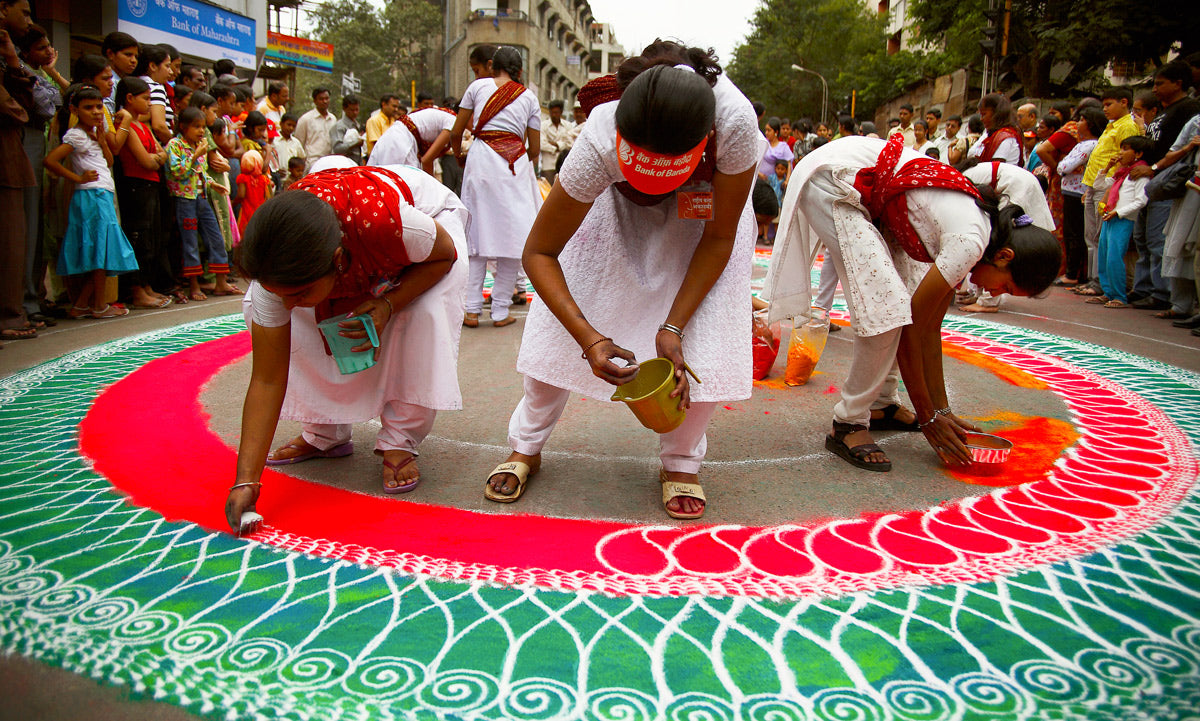
Stroll around residential neighborhoods in India and you may notice something different about the sidewalks: namely, how colorful they are. Every now and then, you’ll spot elaborate drawings on the ground boasting bright hues and beautiful intricacies. But these aren’t like the sidewalk doodles you find in the U.S. Nope, these creations are an art form all their own.
What is Rangoli?
Known by many names across India and Sri Lanka, rangoli is the practice of creating elaborate drawings on the floor or ground. Traditionally done by the wife or daughters of a household, rangoli drawings are considered highly auspicious. In Hinduism, drawing a rangoli in front of the entryway to the house is said to invite Lakshmi, the goddess of wealth and prosperity, into the home. Though rangoli are often spotted on sidewalks, you may also find them inside temples or in front of altars.
An Early Morning Ritual
Rangoli is a daily ritual for countless Indian women, who rise early in the cool morning to wash the sidewalk in front of their homes and create that day’s design. In the past, women often used colored rice flour for drawing, though today, you can spot rangoli made from chalk, colored sand, paint, sawdust, and even flower petals. Morning is always considered the best time to draw, as the damp ground helps the materials stick better. After a day’s worth of wind, rain, or pedestrian footsteps wears away the design, a new one is created the following day. This act of wiping away the old to create something new is intentional, a reminder of life’s constant change.
Traditional Rangoli Designs
Rangoli feature a wide variety of different motifs and patterns. Some are more abstract while others are drawn with flowers, birds, fruit, or the sun and moon. Certain regional variations of rangoli showcase complex geometric patterns, many of which have specific spiritual meanings. In the past, the ability to create such designs without removing one’s hand from the ground was considered an especially unique skill.
Rangoli for the Holidays
Not surprisingly, rangoli drawings tend to pop up more around major holidays and festivals. They add to the lively atmosphere and are a visually pleasing way to welcome holiday guests and travelers (not unlike the American practice of putting twinkle lights up in December). The Hindu holiday and month of Margazhi, for example, is a prime time for women to showcase some of their best and most elaborate rangoli. Many women engage in friendly competition, practicing their drawings the night before in an attempt to outdo their neighbors.

